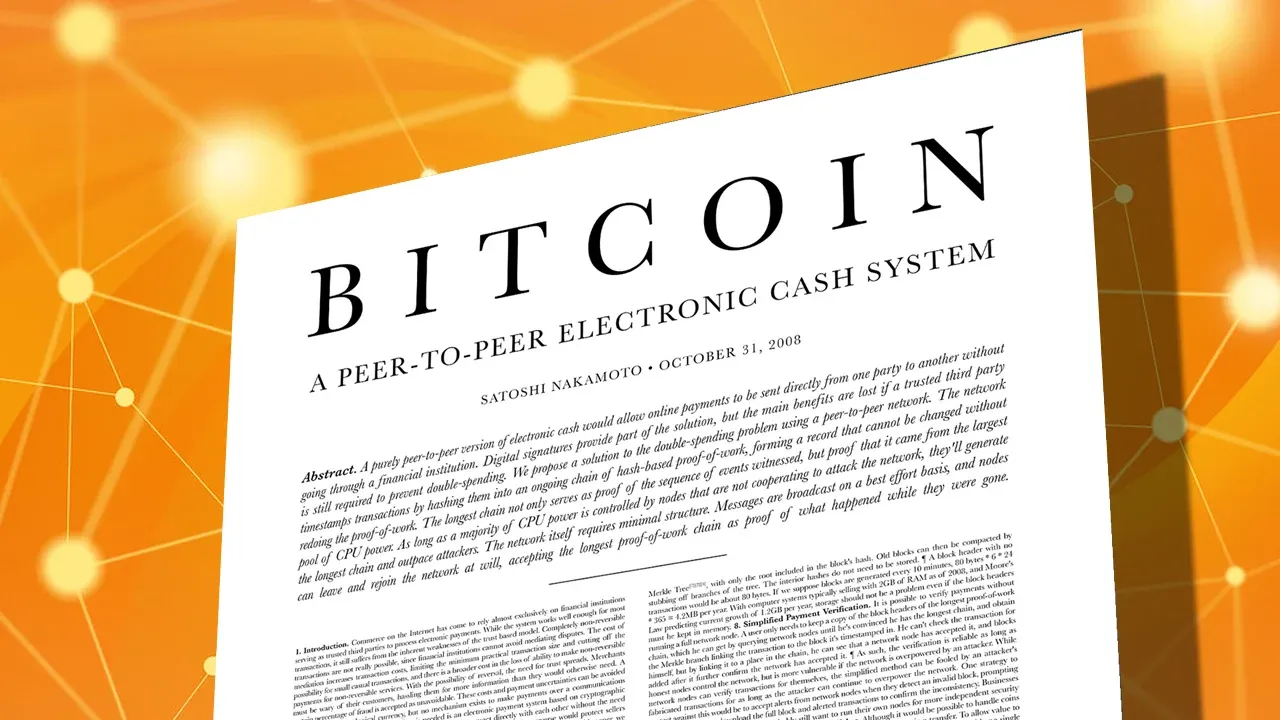Bitcoin’s Lost Path: How Greed and Control Derailed Satoshi Nakamoto’s Vision

In 2008, Satoshi Nakamoto unveiled Bitcoin as a revolutionary peer-to-peer electronic cash system, designed to empower users with a decentralized, scalable, and low-cost transaction network. His vision, detailed in the Bitcoin white paper and early communications, emphasized onchain scaling to handle millions of daily transactions with minimal fees.
Yet, over a decade later, Bitcoin has seemingly veered off course, constrained by a 1 MB block size limit, high fees, unreliable transactions, and a reliance on offchain layer two solutions like the Lightning Network.
Drawing from historical records and a recent post by Justin Bons, this article explores how Bitcoin abandoned Satoshi’s blueprint, arguably driven by greed, institutional influence, and a struggle for control, transforming it into a speculative asset rather than the accessible payment system he envisioned.
Satoshi Nakamoto was a big blocker!
— Justin Bons (@Justin_Bons) August 16, 2025
This contradicts maxi narratives, as it exposes the capture & resulting pivot of BTC
The truth is that Satoshi would oppose everything that BTC stands for today!
As the facts of history expose BTC for abandoning its own founding principles: pic.twitter.com/nFGvLqIgkR
From Vision to Deviation: The Betrayal of Onchain Scaling
Satoshi Nakamoto’s original plan for Bitcoin was clear and pragmatic. His white paper described a system capable of processing transactions onchain, with scalability built into its core. Communications from 2010, as highlighted in Bons’ post, reveal his foresight: on August 11, he proposed a modest 0.01 BTC transaction fee, adjustable to 0.1 BTC, to manage network load while keeping costs low. By October 4, he introduced the 1 MB block size limit as a temporary measure to curb spam, with a roadmap for incremental increases to 10-100 MB as hardware improved, aligning with Moore’s Law’s 60% annual capacity growth. In response to early skeptic James A. Donald in 2009, Satoshi confidently asserted that Bitcoin could scale to millions of daily transactions onchain with upgraded infrastructure, dismissing the need for offchain layers.
However, Satoshi’s disappearance in 2010-2011 left Bitcoin vulnerable to competing agendas. By 2014, Blockstream, a company co-founded by Adam Back and Pieter Wuille, emerged as a pivotal force. Initially, Back supported modest block size increases, such as 2 MB initially and 4 MB later. Yet, after securing $210 million in venture capital by 2021, including from institutions like AXA, Blockstream pivoted to advocate small blocks and offchain solutions like their own Blockstream Liquid Network and Lightning Network. This shift coincided with rising transaction fees, which soared from $0.10 in 2016 to over $50-$100 during the 2017 bull run. Capping Bitcoin at just seven transactions per second compared to Visa’s 1,700, highlighted the failure to scale as Satoshi intended.
The 2017 scaling debate, also referenced as the “Block Size Wars”, crystallized this divide. Proponents of larger blocks forked Bitcoin Cash to prioritize onchain capacity, but the small-block faction, backed by Blockstream, prominent people such as Jack Dorsey, and dominant mining pools controlling 51% of hash power by 2018, prevailed. Critics, including Bons, argue this was less about decentralization and more about preserving high fees and centralized control, with miners and exchanges reaping $20 billion in fees between 2017 and 2021, per CryptoQuant. Blockstream’s promotion of offchain solutions, which generate revenue through proprietary networks, suggests a business-driven motive that contrasts sharply with Satoshi’s decentralized ethos.
Satoshi’s vision of a trustless, scalable payment system has been sidelined by Bitcoin’s current trajectory. The Lightning Network, while offering faster transactions, introduces trusted hubs and KYC requirements, undermining the trustless principles Satoshi championed. Current transaction fees, ranging from $1 to $5, reflect ongoing block space scarcity, a far cry from the sub-$0.10 fees Satoshi’s 10-100 MB blocks could have enabled by 2025. Had his incremental scaling plan been followed, Bitcoin might process millions of transactions daily onchain, fulfilling its role as a global electronic cash system. Instead, it has become “digital gold” not used for transacting but for settlement, shaped by the likes of big players like Michael Saylor and institutional interests, as Bons’ post suggests.
Stay In The Loop and Never Miss Important Bitcoin News
Sign up and be the first to know when we publishReflecting on this divergence raises critical questions about Bitcoin’s future. Satoshi’s emails reveal a commitment to user empowerment, not institutional profit or artificial scarcity. His pragmatic approach to scaling, cautious yet forward-thinking, stands in stark contrast to the stagnation imposed by the 1 MB limit and the pivot to offchain solutions. While Bitcoin Cash attempted to preserve his vision, its limited adoption shows the dominance of the small-block narrative. If Satoshi were to witness Bitcoin today, he might view it as a betrayal of his dream, captured by greed and control rather than driven by the principles of decentralization and accessibility he outlined.
As Bitcoin stands, the community faces a choice: revisit Satoshi’s onchain scaling proposals or continue down the path of offchain reliance. The evidence from his writings and the current state of the network suggests that his vision of a scalable, low-cost, and decentralized payment system remains unfulfilled. By questioning the influence of profit-driven entities and centralized mining power, Bitcoin’s advocates can reignite the debate over its true purpose. Honoring Satoshi’s legacy means confronting these uncomfortable truths and striving for a network that prioritizes users over agendas, ensuring Bitcoin remains a tool for financial freedom rather than a speculative commodity like gold.

